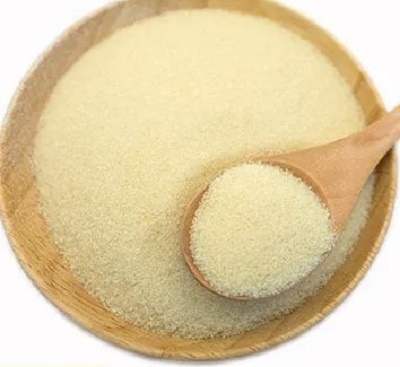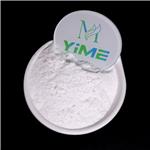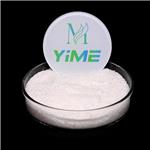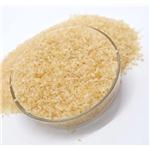The-widely-applications-of-Gelatin
Oct 8,2023
Description
Gelatin is a transparent, flavorless, solid, and water-soluble protein. It is composed of about 19 AAs and is also a mixture of proteins and peptides. It is a biopolymer that is prepared by thermal denaturalization of collagen, which is available in animal skin and bones in the presence of dilute acids.Gelatin is an optically active material in both the random coil and helical states similar to any other protein[1]. Depending on the method of gelatin processing from native collagen, either using acidic or alkaline pretreatments, two types of gelatin can be formed: type A and type B. Gelatin has many advantages such as availability, economy, biocompatibility, and biodegradability. Hence, it is primarily used as a gelling agent in food, pharmaceutical, and cosmetic industries and it forms a gel on cooling below 35 ℃.

Medical industry
In animals, gelatin is one of the fibrous proteins present in skin, bones, and cartilage. The age and source highly influence the properties of gelatin. In contrast to collagen, gelatin does not elicit any noticeable antigenicity after implantation. They have similar physicochemical and biological properties to collagen, and gelatin A and gelatin B have been used as different forms of wound healing biomaterials, including electrospun nanofibers. electrospun gelatin and gelatin-based scaffolds have been used for a variety of biomedical applications, such as bone regeneration, skin tissue engineering, nerve tissue engineering, cardiac tissue engineering, tubular scaffolds, and drug delivery。 It is used as a matrix for implants, in device coatings, and as a stabilizer in vaccines against measles, mumps, rubella, Japanese encephalitis, rabies, diphtheria, and tetanus toxin[2].
Food industry
Gelatin products have a wide range of expansion and viscosity values and can be used in food manufacturing, with specific properties selected according to the needs of the application. Gelatin formulations in the food industry use water or aqueous polyhydroxyols almost exclusively as solvents for confectionery, marshmallow, or dessert preparations. In dairy and frozen foods, gelatin's protective colloidal properties prevent the crystallization of ice and sugar. In sour cream and cottage cheese, gelatin inhibits water separation by synergistic action. Since it can inhibit the crystallization of sugar, marshmallows contain up to 1.5% gelatin, thus maintaining the softness and plasticity of marshmallows. Many lozenges, wafer biscuits, and candy coatings also contain up to 1% gelatin[3].
Nanomaterials preparation
Due to its unique chemical and physical properties, gelatin has been developed as a drug carrier to prepare nanomaterials. In addition, gelatin is a biocompatible and non-immunogenic substrate for matrix metalloproteinases (MMPs). This property broadens its applications in the field of nanomaterials[1]. Chitosan conjugated gelatin, poly(DL-lactide)-grafted gelatin, PEG-modified gelatin, and thiolated derivatives of gelatin were some of the reported gelatin derivatives with wide pharmaceutical applications.
References
[1] Mohiti-Asli M., et al. 23 Nanofibrous smart bandages for wound care. Wound Healing Biomaterials, 2016; 2: 483-499.
[2] Fagnani D, et al. Polymers for a Sustainable Environment and Green Energy. Macromolecular Rapid Communications, 2022; 43: 2200446.
[3] Narayanaswamy R, et al. Basics to different imaging techniques, different nanobiomaterials for image enhancement. Nanobiomaterials in Medical Imaging, 2016; 8: 101-129.
- Related articles
- Related Qustion
- Gelatin:Application, Production and Common Usage Mar 4, 2024
Gelatin, also known as glutin, is a translucent, colourless, odourless food ingredient usually derived from collagen extracted from animal body parts.
- Properties and Applications of Gelatin Mar 4, 2022
Gelatin is the heat-denatured, partially hydrolyzed form of native, insoluble collagen. Gelatin is deficient in methionine and completely devoid of tryptophan (Bailey & Light, 1989) , both essential amino acids.
- Uses and Correlational research of Gelatin Oct 21, 2019
Gelatin is a translucent, colorless, flavorless food ingredient, derived from collagen taken from animal body parts. Brittle when dry and gummy when moist. Gelatin is made from collagen. Collagen is one of the materials that make up cartila
Gelatin
9000-70-8You may like
- Nisin: Application, Mechanism of action and Side effects
Apr 28, 2024
- What is the primary function of NAD and FAD?
Apr 28, 2024
- The benefits of Copper tripeptide
Apr 22, 2024
- GELATIN
-

- $10.00/ kg
- 2024-04-28
- CAS:9000-70-8
- Min. Order: 100kg
- Purity: 99%
- Supply Ability: 1000kg
- Bovine GELATIN
-

- $10.00/ kg
- 2024-04-28
- CAS:9000-70-8
- Min. Order: 100kg
- Purity: 99%
- Supply Ability: 1000kg
- Gelatin
-

- $0.00 / 1kg
- 2024-03-29
- CAS:9000-70-8
- Min. Order: 1kg
- Purity: 99%
- Supply Ability: 20tons




